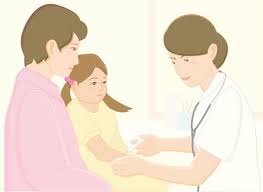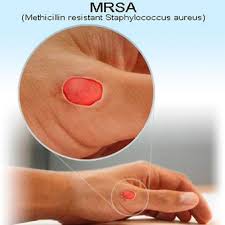
Research and the Role of the NP
Order Instructions:
Research and the Role of the NP
Nursing research differs from research in other fields in that nursing draws data and develops interventions from a broad knowledge base (e.g. social science, biology, chemistry, etc.). The advantage of interdisciplinary and multidisciplinary collaboration is increasingly apparent. Review Bringing Science to Life: The Interdisciplinary Advantage (NINR, 2011).
After reviewing, please address the following:
• Compare and contrast nursing research to that of other fields of study.
• Appraise the role of the NP in the process of collaboration with researchers in other fields.
• Distinguish the role of the NP in clinical trials.
Resources
Advanced Practice Nursing: Emphasizing Common Roles
• Chapters 4, 9
Please review the following web resources:
National Institute for Nursing Research
NINR – Bringing Science to Life: The Interdisciplinary Advantage
Robert Johnson Wood Foundation
National Institute of Health
Agency for Healthcare Research and Quality
SAMPLE ANSWER
As compared with other professions, nurses do numerous kinds of duty. They make observations and adjust treatments, patient habits, and medications. Nurses not only observe medical and scientific outcomes, but also human treatment results and emotional behavior that influence treatments. As a result, nursing research is developed to cover all these areas, which other forms of researches easily neglect.
Nursing research is developed on a rigorous scientific inquiry with a significant body of knowledge with the goal of advancing the field of nursing practice, creating positive health impact across the world, and shaping healthcare policy. Nursing practice is structured to meet the goals of optimizing population health and societal well-being (Potempa & Tilden, 2004). The research is coined on holistic study of individuals, their families, communities, and society in general. Unlike most studies, nursing practice encompasses a wide discipline including biobehavioral, translational scientifically approach, and interdisciplinary. A significant development in nursing research is the emphasis on evidence-based practices (Squires, Adachi & Estabrooks, 2008).
Nursing research has a wider scope than other researches. Most researches are developed for a specific outcome, however, any single nursing research is aimed at coming out with diverse outcome. Nursing researches revolves around clinical research, health outcomes research, health systems, and nursing education research. Clinical research is aimed at unearthing behavioral, biological, and other forms of investigations. They are undertaken in any setting where nursing practice takes place (Berlin, Wilsey & Bednash, 2005). Health systems and outcomes research are aimed at examining the quality, availability, and costs of health care services. In addition, the research is aimed at finding ways improving the effectiveness and appropriateness of all clinical practices. Nursing education practice is aimed at empowering young learner and equipping them with necessary skills needed in practice, scientific, and clinical development.
With new developments in nursing practice, such as evidenced based studies, researchers are obliged to collaborate with other parties. Nurses likewise are interested in solving diverse problems away from individual patient. They prefer observing clients in their traditional setting rather the hospital cases alone (Ploeg, Davies, Edwards, Gifford & Elliott, 2007). Usually, gaining access of clients in their natural setting presents numerous challenges. In independent research, nurses rely on diagnosis chain such as public health assistants, physicians, laboratories, and doctors to vital information. Nursing researches cannot be undertaken successfully without legal interventions, which consent and facilitate acquisition of information in their natural setting. Nurses rely on various researches to gather information basic information such as population statistics from statistical departments, geographical maps from the relevant departments, they rely on climatic and whether information to relate their health impact on the population. Additionally, nurses collaborate with educators to promote their values, and technological researches for their research instrumentation and validity (Ploeg, Davies, Edwards, Gifford & Elliott, 2007).
Nurses have a unique practices in clinical domain. The activities are diverse and span over specializations such as medical surgical, neurology, oncology, and mental health. Most of the activities undertaken by nurses are service driven (Schramp, Holtcamp, Phillips, Johnson, Hoff, 2010). There are two distinct nursing roles; CRN and RNC. CRN role is integration of specialized knowledge and skills to collaborate with patients for better outcome. RNC is focused on study management, continuity and care coordination. Some of the work conducted in clinical trials overlaps nursing research practices (Nagel, Gender, Bonner, 2010). In essences, nursing research is a holistic study approach with diverse perspectives.
References
Berlin, L.E, Wilsey, S.J., & Bednash, G.D. (2005). 2004-2005 enrollment and graduations in baccalaureate and graduate programs in nursing. Washington, DC: American Association of Colleges of Nursing.
Nagel, K., Gender, J., Bonner, A. (2010). Delineating the role of a cohort of clinical research nurses in a pediatric cooperative clinical trials group. Oncol Nurs Forum. 37(3):E180– 185
Ploeg, J., Davies, B., Edwards, N., Gifford, W. & Elliott M., (2007). Factors influencing best-practice guideline implementation: Lessons learned from administrators, nursing staff and project leaders. Worldviews on Evidence-Based Nursing. Vol 4(4):210-219.
Potempa, K.M., & Tilden, V. (2004). Building high-impact science: The dean as innovator. Nursing Education, 43, 502-505.
Squires J, Adachi A, Estabrooks C: (2008). Developing a Valid and Reliable Measure of Research Utilization Technical Report. Edmonton, AB: Faculty of Nursing, University of Alberta.
Schramp LC., Holtcamp M., Phillips SA., Johnson, TP., Hoff J. (2010). Advanced practice nurses facilitating clinical translational research. Clin Med Res. 8(3–4):131–134.
We can write this or a similar paper for you! Simply fill the order form!












